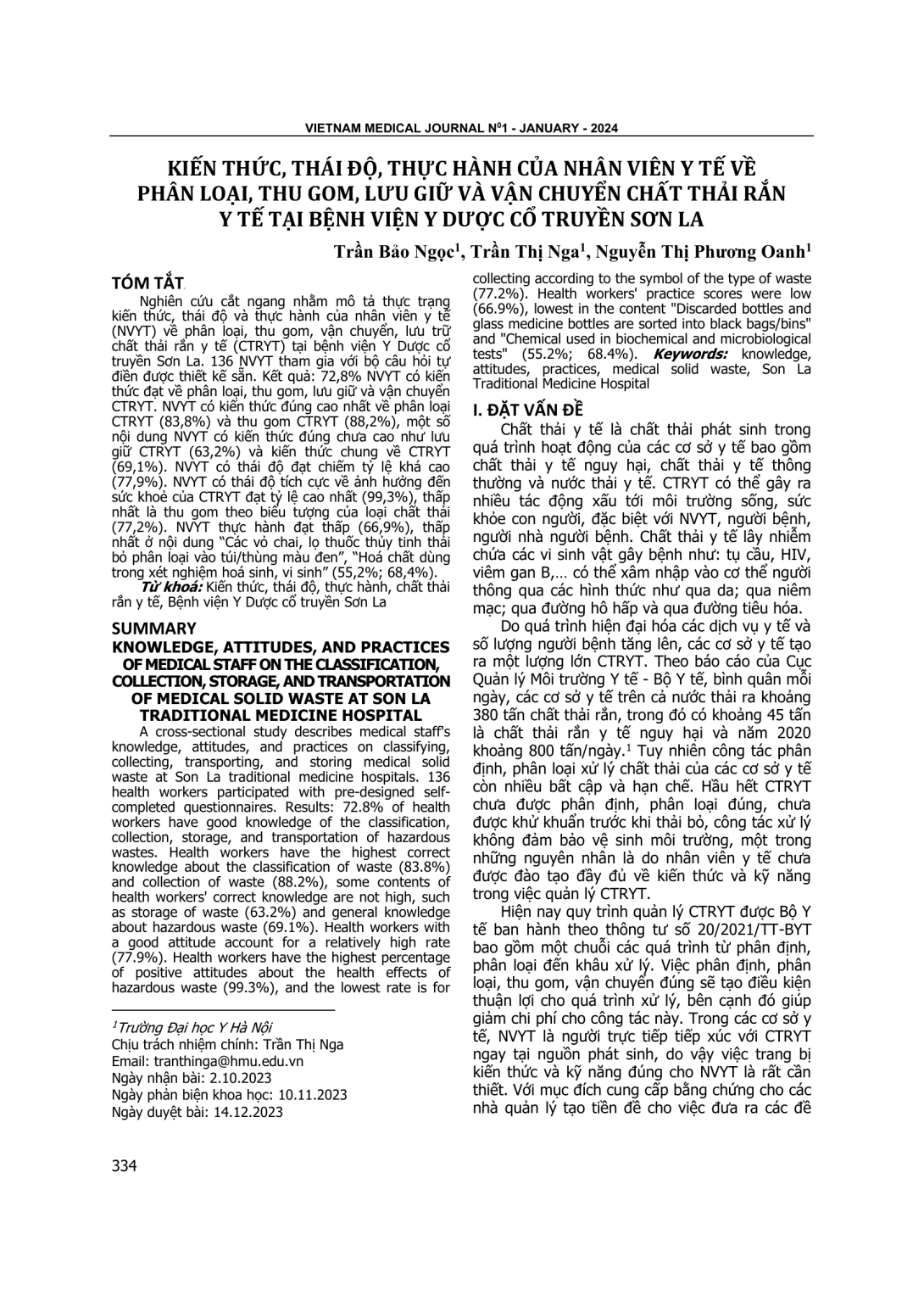
Nghiên cứu cắt ngang nhằm mô tả thực trạng kiến thức, thái độ và thực hành của nhân viên y tế (NVYT) về phân loại, thu gom, vận chuyển, lưu trữ chất thải rắn y tế (CTRYT) tại bệnh viện Y Dược cổ truyền Sơn La. 136 NVYT tham gia với bộ câu hỏi tự điền được thiết kế sẵn. Kết quả: 72,8% NVYT có kiến thức đạt về phân loại, thu gom, lưu giữ và vận chuyển CTRYT. NVYT có kiến thức đúng cao nhất về phân loại CTRYT (83,8%) và thu gom CTRYT (88,2%), một số nội dung NVYT có kiến thức đúng chưa cao như lưu giữ CTRYT (63,2%) và kiến thức chung về CTRYT (69,1%). NVYT có thái độ đạt chiếm tỷ lệ khá cao (77,9%). NVYT có thái độ tích cực về ảnh hưởng đến sức khoẻ của CTRYT đạt tỷ lệ cao nhất (99,3%), thấp nhất là thu gom theo biểu tượng của loại chất thải (77,2%). NVYT thực hành đạt thấp (66,9%), thấp nhất ở nội dung “Các vỏ chai, lọ thuốc thủy tinh thải bỏ phân loại vào túi/thùng màu đen”, “Hoá chất dùng trong xét nghiệm hoá sinh, vi sinh” (55,2%; 68,4%).
A cross-sectional study describes medical staff's knowledge, attitudes, and practices on classifying, collecting, transporting, and storing medical solid waste at Son La traditional medicine hospitals. 136 health workers participated with pre-designed self-completed questionnaires. Results: 72.8% of health workers have good knowledge of the classification, collection, storage, and transportation of hazardous wastes. Health workers have the highest correct knowledge about the classification of waste (83.8%) and collection of waste (88.2%), some contents of health workers' correct knowledge are not high, such as storage of waste (63.2%) and general knowledge about hazardous waste (69.1%). Health workers with a good attitude account for a relatively high rate (77.9%). Health workers have the highest percentage of positive attitudes about the health effects of hazardous waste (99.3%), and the lowest rate is for collecting according to the symbol of the type of waste (77.2%). Health workers' practice scores were low (66.9%), lowest in the content "Discarded bottles and glass medicine bottles are sorted into black bags/bins" and "Chemical used in biochemical and microbiological tests" (55.2%; 68.4%).
- Đăng nhập để gửi ý kiến
